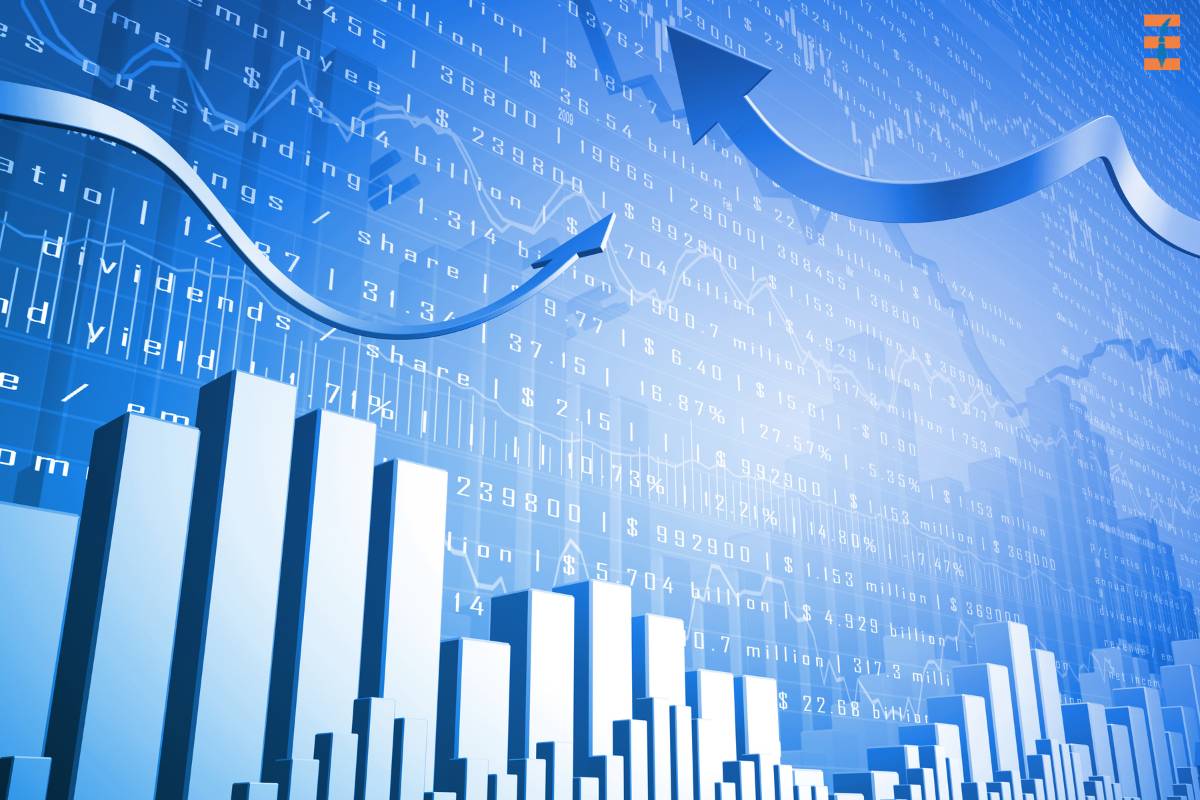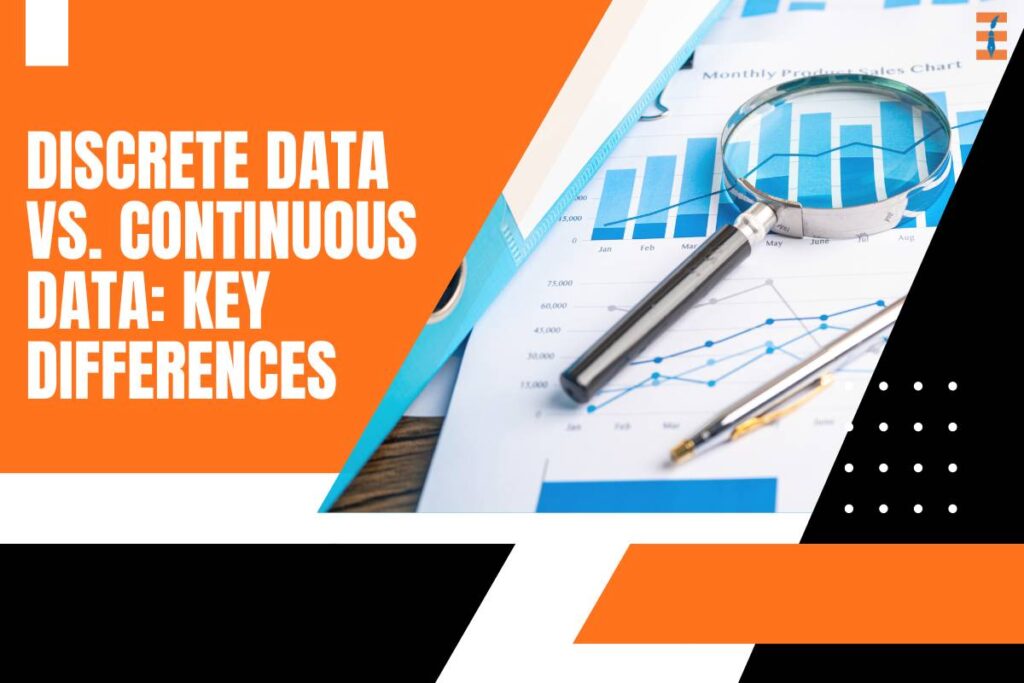In the world of data analysis and statistics, it’s important to know the types of data you are working with. Two main types are discrete data and continuous data. Understanding these differences between Discrete Data Vs. Continuous Data is important for choosing the right tools, visualizations, and analyses. In this article, we will explain the key differences between discrete data and continuous data, looking at their characteristics, examples, and uses.
Discrete Data Vs. Continuous Data: Definition
Before understanding the difference between Discrete Data Vs. Continuous Data becomes important to know what they exactly mean.
Discrete Data:
Discrete data refers to countable, distinct, and separate values. These values can be enumerated and are typically whole numbers. Discrete data often arises from counting objects or events. The data points do not form a continuum; instead, they exist as isolated points on a number line. Here are some key characteristics of discrete data:
- Countable Values: Discrete data consists of distinct, countable values. For example, the number of students in a classroom or the number of cars in a parking lot.
- Finite or Infinite: Discrete data can be either finite (e.g., the number of books on a shelf) or countably infinite (e.g., the number of times a fair coin lands on heads).
- Non-Divisible Units: The values in discrete data cannot be divided meaningfully. For instance, you cannot have 2.5 students or 3.7 cars.
Examples of Discrete Data
- Number of Siblings: If you survey a group of people and ask how many siblings they have, the responses will be discrete numbers like 0, 1, 2, etc.
- Defects in a Batch: In quality control, counting the number of defective items in a batch of products provides discrete data.
- Survey Responses: Responses to a survey question with multiple-choice options (e.g., “What is your favorite color?”) produce discrete data.
Continuous Data:

Continuous data, on the other hand, consists of values that form an unbroken continuum. These values can take on any number within a specified range, including fractions and decimals. Continuous data often arises from measuring something. Here are some key characteristics of continuous data:
- Infinite Possibilities: Continuous data can take on an infinite number of values within a given range. For example, the height of individuals or the temperature of a liquid.
- Divisible Units: The values in continuous data can be subdivided infinitely. For instance, you can measure time in hours, minutes, seconds, and even milliseconds.
- Interval Data: Continuous data typically represents interval or ratio scales, where the difference between values is meaningful and consistent.
Examples of Continuous Data
- Height: Measuring the height of individuals results in continuous data, as the height can vary infinitely within a range (e.g., 5.8 feet, 6.1 feet).
- Temperature: Recording the temperature throughout the day produces continuous data, with possible values like 72.5°F, 73.6°F, etc.
- Time: Measuring time intervals, such as the duration of a race or the time it takes to complete a task, results in continuous data.
Discrete Data vs. Continuous Data: Key Differences
Understanding the differences between discrete data vs. continuous data is essential for proper data analysis. Here are the key distinctions:
1. Nature of Values
- Discrete Data: Consists of distinct, separate values that are countable. These values often represent whole numbers and cannot be subdivided meaningfully.
- Continuous Data: Consists of values that form an unbroken continuum. These values can take on any number within a specified range and can be subdivided infinitely.
2. Measurement
- Discrete Data: Typically results from counting objects or events. For example, counting the number of students in a class.
- Continuous Data: Typically results from measuring something. For example, measuring the height of a person or the temperature of a room.
3. Examples
- Discrete Data: Number of students, number of cars, survey responses.
- Continuous Data: Height, temperature, time intervals.
4. Representation
- Discrete Data: Often represented using bar charts or pie charts, where each bar or segment represents a distinct value.
- Continuous Data: Often represented using histograms or line charts, where the data points are connected to show the continuum.
5. Statistical Methods
- Discrete Data: Analyzed using methods suited for countable data, such as frequency distributions, chi-square tests, and binomial distributions.
- Continuous Data: Analyzed using methods suited for measurable data, such as descriptive statistics (mean, median, standard deviation), regression analysis, and normal distributions.
Practical Applications
In Business

In business, understanding the distinction between Discrete Data Vs. Continuous Data is vital for making informed decisions. For instance:
- Inventory Management: Counting the number of items in stock (discrete data) helps in inventory control and order planning.
- Quality Control: Measuring product dimensions or weights (continuous data) ensures that products meet quality standards.
In Healthcare
In healthcare, discrete data and continuous data play crucial roles in patient care and medical research:
- Patient Records: Counting the number of patients with a specific condition (discrete data) helps in resource allocation and treatment planning.
- Medical Measurements: Measuring vital signs such as blood pressure, temperature, and heart rate (continuous data) aids in monitoring patient health.
In Education
In education, both discrete data and continuous data are used to assess and improve student performance:
- Test Scores: Recording the number of correct answers on a test (discrete data) helps in evaluating student knowledge.
- Graduation Rates: Measuring the time it takes for students to graduate (continuous data) provides insights into educational effectiveness.
Visualizing Discrete Data vs. Continuous Data
Choosing the right visualization between Discrete Data Vs. Continuous Data is crucial for effectively communicating the nature of your data. Here’s how to visualize discrete data and continuous data:
Discrete Data Visualization
- Bar Charts: Bar charts are ideal for visualizing discrete data. Each bar represents a distinct value, and the height of the bar corresponds to the frequency or count of that value.
- Pie Charts: Pie charts can be used to show the proportions of different categories in discrete data.
Continuous Data Visualization
- Histograms: Histograms are perfect for visualizing continuous data. They show the distribution of data over a continuous range, with each bar representing an interval.
- Line Charts: Line charts are useful for showing trends in continuous data over time. The data points are connected to illustrate the continuum.
Statistical Analysis of Discrete Data vs. Continuous Data

The type of data determines the appropriate statistical methods for analysis. Here’s a brief overview of the analysis between Discrete Data Vs. Continuous Data.
Analyzing Discrete Data
- Frequency Distribution: This method involves counting the occurrences of each distinct value.
- Chi-Square Test: Used to test the independence of categorical variables.
- Binomial Distribution: Applied to scenarios with two possible outcomes (e.g., success or failure).
Analyzing Continuous Data
- Descriptive Statistics: Includes measures such as mean, median, mode, and standard deviation.
- Regression Analysis: Used to examine the relationship between continuous variables.
- Normal Distribution: Many continuous data sets follow a normal distribution, which is used in various statistical tests.
Conclusion
You are understanding the difference between discrete Data Vs. Continuous Data data is key for accurate data analysis. Discrete data consists of countable, separate values, like the number of students in a class. Continuous data includes measurable values within a range, like height or temperature. Knowing the difference helps you pick the right analysis methods. This knowledge is useful in many fields, such as inventory management, medical research, and education. Mastering these concepts ensures better accuracy in your results and improves your ability to interpret data correctly.

